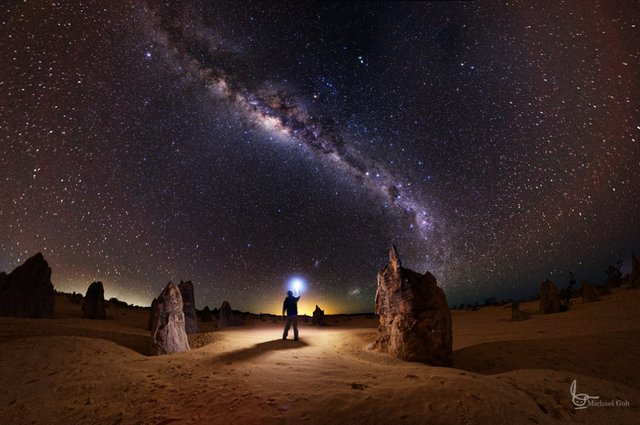A cataclysmic collision changed the history of the Milky Way
A cataclysmic collision changed the history of the Milky Way
The Milky Way suffered a great shock between 8,000 and 10,000 million years ago against the 'Sausage Galaxy'.

Apparently, our galaxy is as we see it today because of a brutal encounter with an object called the Sausage galaxy. Logically, we are not talking about processed cosmic foods, but about the remains of a small galaxy that crashed into the Milky Way billions of years ago, leaving behind a clutter of stars with rather unusual orbits.
So, where does the name "sausage" come from? The astronomer at the University of Cambridge (England) Wyn Evans says that everything was reduced to the paths left by the stars after the impact. "The sausage shape just jumped at us when we saw the trajectories of the stars," says Evans. "These sausage stars are what remains of the last great fusion of the Milky Way."
The history of the collision
Using data from the Gaia spacecraft of the European Space Agency, astronomers discovered scientific evidence indicating an ancient frontal collision between the young Milky Way and a smaller body called the "Sausage" galaxy, a cataclysm that helped define the structure of the galaxy. home of the Earth. space, giving shape to the internal bulb of the galaxy, its outer halo and adding at least eight massive globular clusters.
The smaller dwarf galaxy did not survive the encounter, falling apart quickly when its stars merged with the Milky Way and remodeled it.
Vasily Belokurov of the University of Cambridge and the Center for Computational Astrophysics at the Flatiron Institute in New York City (USA) said the collision "shattered the dwarf object, leaving its stars moving in very radial orbits, carrying them very close to the center of our galaxy, this is a telltale sign that the dwarf galaxy entered a really eccentric orbit and its fate was sealed. "
The collisions with smaller galaxies continued later, that is, our galaxy has continued to collide with other galaxies, such as the "insignificant dwarf Sagittarius galaxy", but the 'Sausage' was much more massive: 10,000 million times the mass of the sun when its gas, dust, stars and dark matter are included. When it crashed into the Milky Way, the galaxy's disk probably swelled or even fractured after the impact and would have had to grow back.
The stars of the 'Sausage galaxy' are all spinning at the same distance from the center of the Milky Way
The computer simulations reproduced the characteristics described by the researchers, showing stars of the sausage galaxy entering into extended orbits similar to those observed in the Gaia data. The simulations show these increasingly elongated orbits in the growing disk of the Milky Way, which swells and thickens after the collision.
"While there have been many dwarf satellites falling in the Milky Way throughout his life, this was the largest of all," said Sergey Koposov of Carnegie Mellon University.


